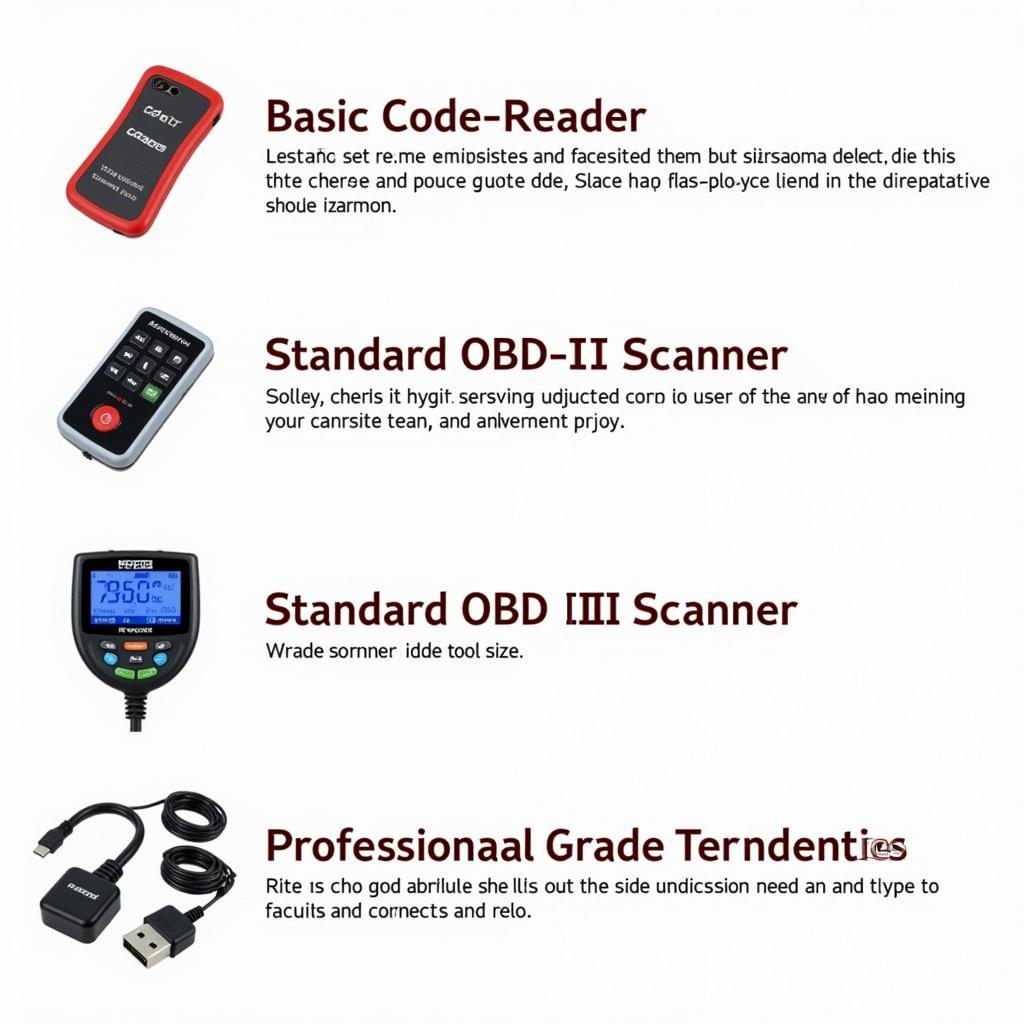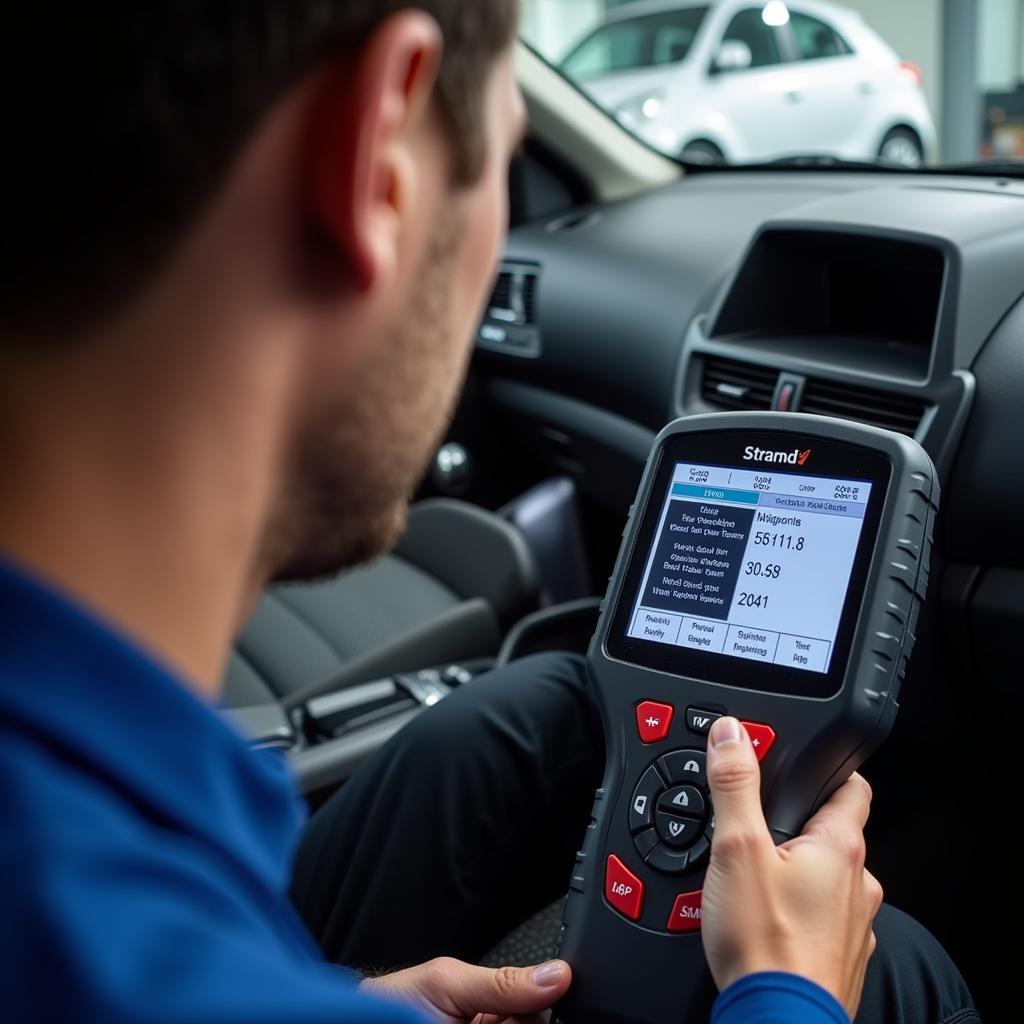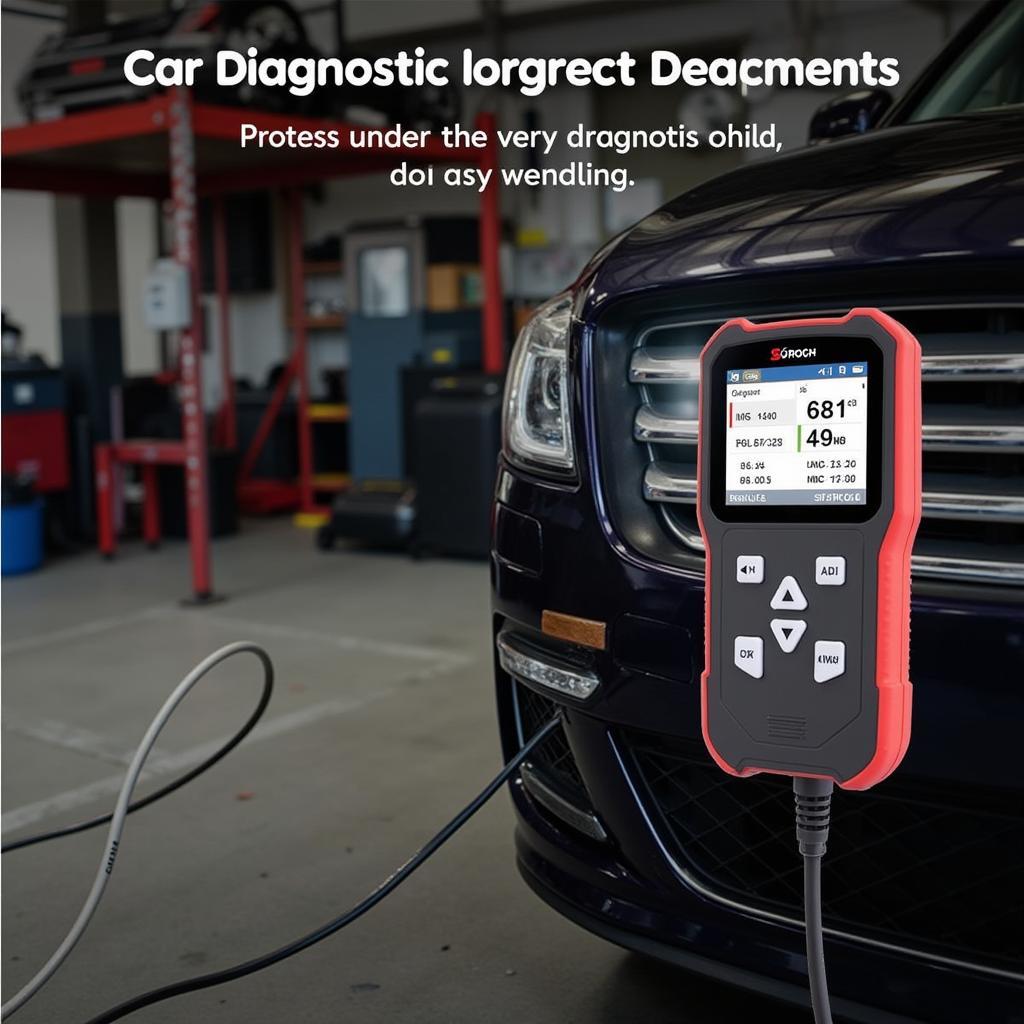A Car Diagnostic Inspection Tool is essential for any mechanic, professional, or even car enthusiast. It allows you to quickly and accurately identify problems with your vehicle, saving you time and money in the long run. But with so many options available, selecting the right tool can be overwhelming. This guide will help you navigate the world of car diagnostic inspection tools, providing you with the knowledge you need to make an informed decision. how to take care of your tools
Understanding Car Diagnostic Inspection Tools
Car diagnostic inspection tools, often referred to as OBD (On-Board Diagnostics) scanners, connect to your vehicle’s computer system to retrieve diagnostic trouble codes (DTCs). These codes pinpoint the source of malfunctions, ranging from minor sensor issues to complex engine problems. They are indispensable for modern vehicle maintenance and repair. From basic code readers to advanced professional-grade scanners, understanding the different types of tools is crucial.
Types of Car Diagnostic Inspection Tools
Several types of car diagnostic inspection tools cater to different needs and budgets.
- Code Readers: Basic tools that display DTCs. Ideal for car owners who want to understand basic issues.
- OBD-II Scanners: More advanced than code readers, they can access live data, sensor readings, and perform some bi-directional controls. Suitable for DIYers and mechanics.
- Professional Scan Tools: Comprehensive tools with advanced functionalities like programming, coding, and access to manufacturer-specific data. Essential for professional mechanics and workshops.
 Types of OBD Scanners
Types of OBD Scanners
Key Features to Consider
Choosing the right car diagnostic inspection tool depends on your specific needs. Consider these key features:
- Vehicle Compatibility: Ensure the tool is compatible with your vehicle’s make, model, and year.
- Functionality: Determine the features you require, such as code reading, live data streaming, bi-directional control, and special functions.
- User Interface: Look for a tool with a user-friendly interface and easy-to-understand displays.
- Software Updates: Regular software updates are essential for compatibility with new vehicle models and features.
- Durability and Portability: Opt for a durable and portable tool, especially if you plan to use it frequently.
What is Bi-directional Control?
Bi-directional control allows the scanner to send commands to the vehicle’s systems, enabling you to test components like actuators and solenoids. This feature is vital for advanced diagnostics.
Choosing the Right Tool for Your Needs
Are you a car owner, a DIY enthusiast, or a professional mechanic? The ideal car diagnostic inspection tool varies based on your use case.
- Car Owners: A basic code reader or a simple OBD-II scanner is sufficient for checking and understanding basic trouble codes.
- DIY Enthusiasts: An OBD-II scanner with live data and some bi-directional control capabilities offers more in-depth diagnostic options.
- Professional Mechanics: A professional-grade scan tool with advanced functionalities, manufacturer-specific data, and programming capabilities is essential.
 Professional Grade Scan Tool in Use
Professional Grade Scan Tool in Use
“Investing in a quality car diagnostic inspection tool is crucial for efficient vehicle maintenance,” says automotive expert, John Miller. “It empowers you to take control of your vehicle’s health and avoid unnecessary repair costs.”
Car Diagnostic Inspection Tool Best Practices
Using your car diagnostic inspection tool effectively involves understanding best practices.
- Consult the User Manual: Familiarize yourself with the tool’s specific features and operation.
- Proper Connection: Ensure the tool is correctly connected to the vehicle’s OBD port.
- Interpreting Codes: Understand how to interpret DTCs and use them to diagnose problems.
- Seeking Professional Help: When necessary, don’t hesitate to consult a qualified mechanic for complex issues.
upper control tool alarm for car
How to Interpret DTCs?
DTCs are composed of letters and numbers. Understanding the structure of the code and using online resources or repair manuals can help you pinpoint the source of the problem.
Conclusion
Selecting the right car diagnostic inspection tool is a significant investment that can save you time, money, and frustration in the long run. By considering your needs, understanding the different types of tools available, and focusing on key features, you can choose a car diagnostic inspection tool that empowers you to maintain and repair your vehicles effectively. how to open car wash coin vault tools
“A reliable car diagnostic inspection tool is an indispensable asset for anyone involved in automotive repair,” states Sarah Johnson, a seasoned mechanic with over 20 years of experience. “It allows for accurate diagnostics and informed repair decisions, leading to enhanced vehicle performance and longevity.”
 Car Diagnostic in Action
Car Diagnostic in Action
When you need assistance, please contact us via WhatsApp: +1(641)206-8880, Email: [email protected] or visit our office at 910 Cedar Lane, Chicago, IL 60605, USA. We have a 24/7 customer service team.

Leave a Reply